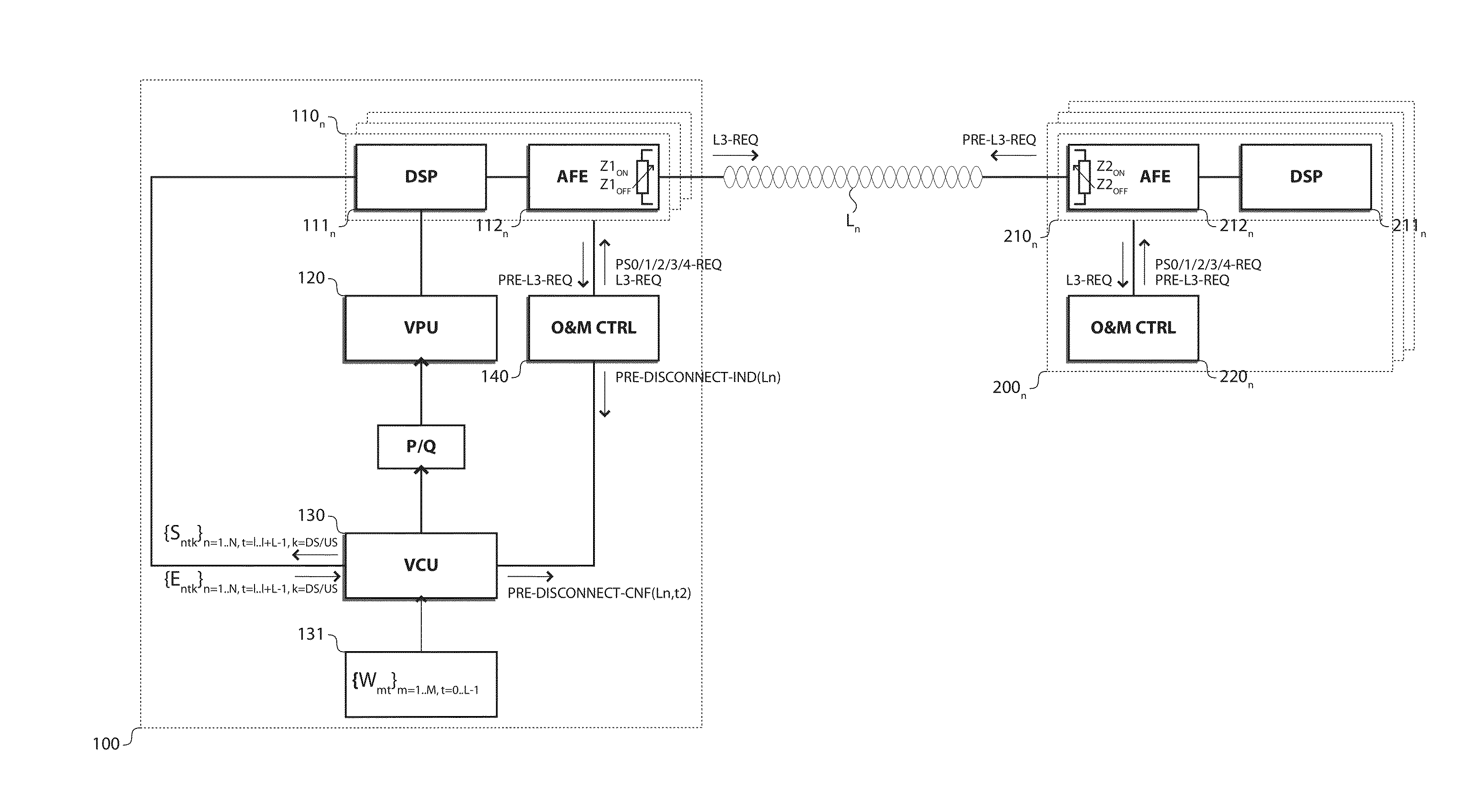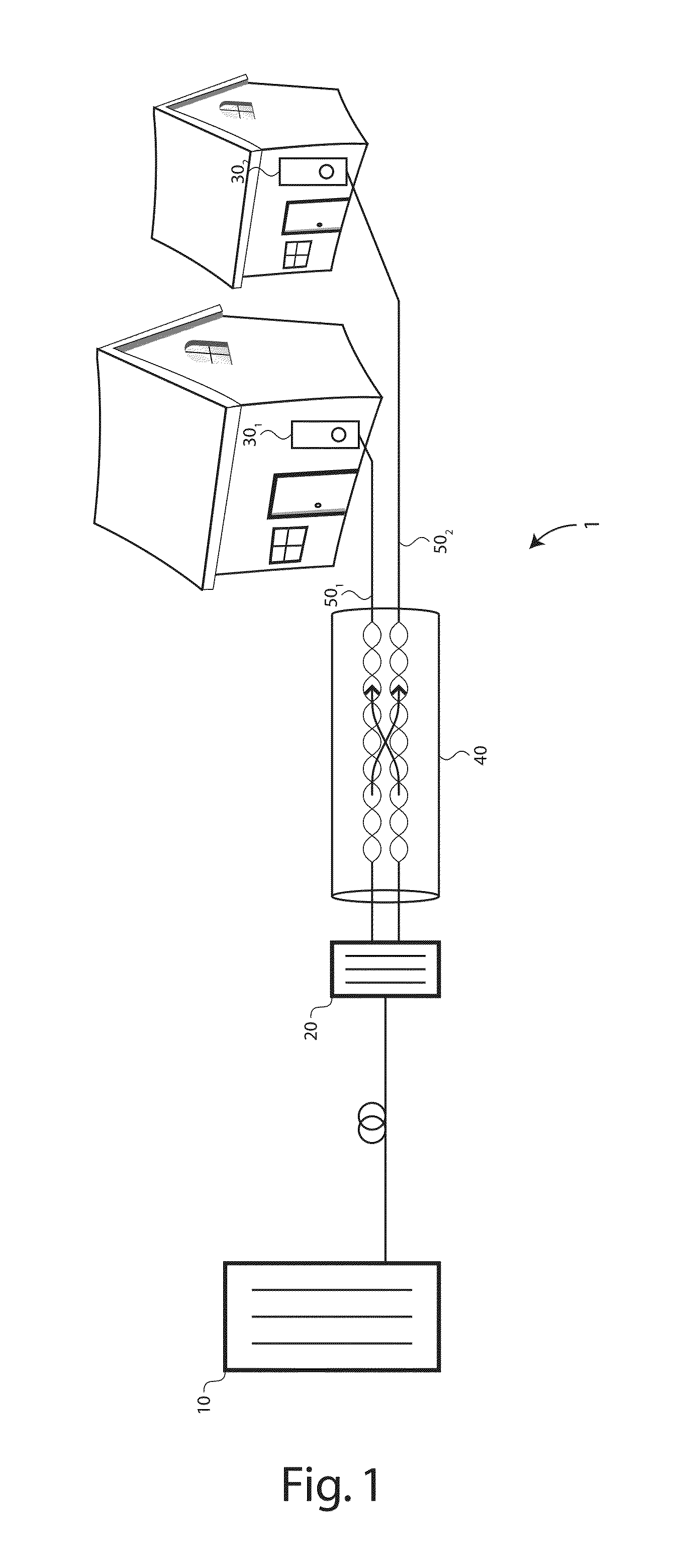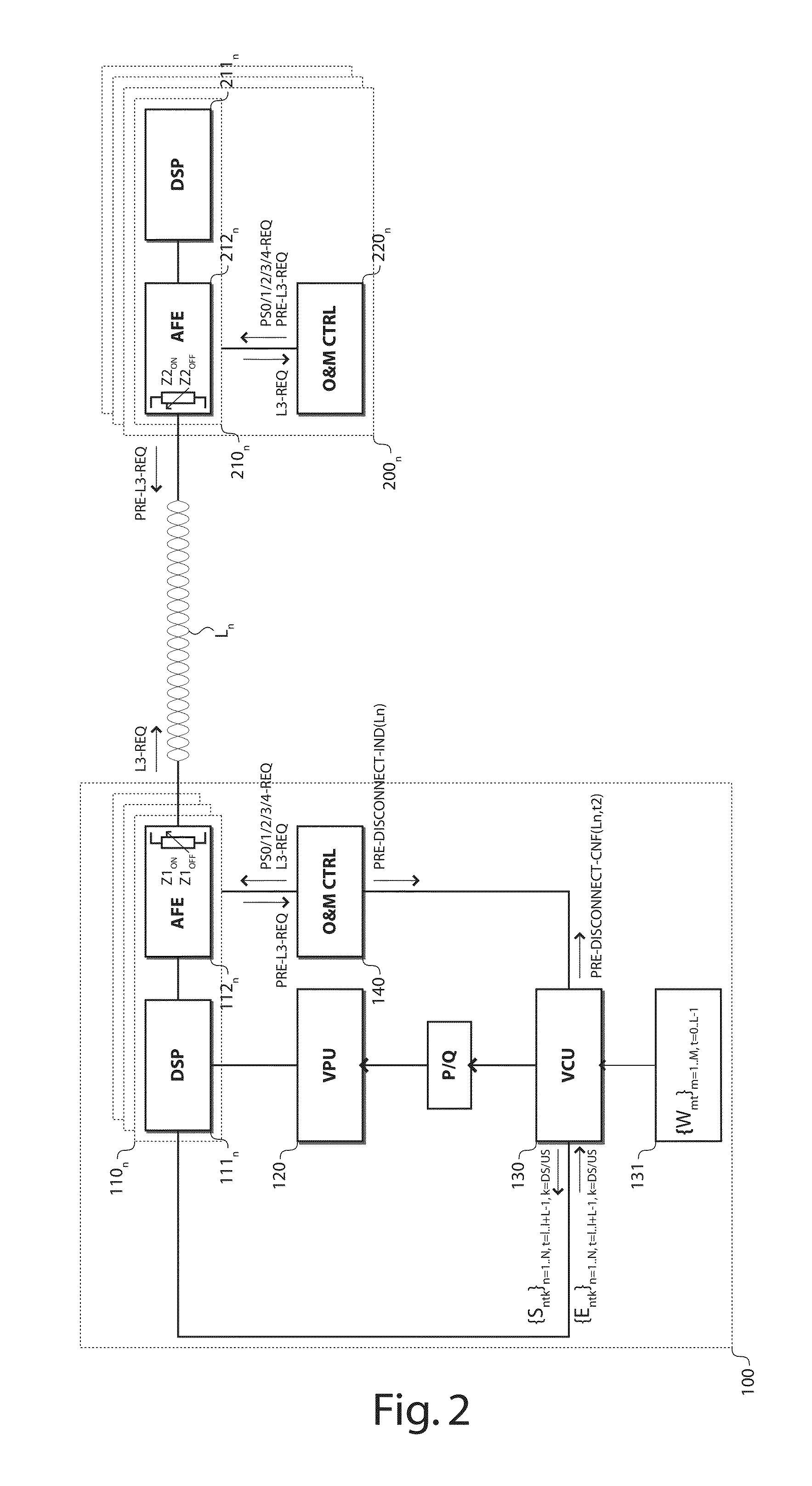Orderly leaving within a vectoring group
- Summary
- Abstract
- Description
- Claims
- Application Information
AI Technical Summary
Benefits of technology
Problems solved by technology
Method used
Image
Examples
Embodiment Construction
[0036]There is seen in FIG. 1 an access plant 1 comprising a network unit 10 at a CO, a remotely-deployed access node 20 coupled via one or more optical fibers to the network unit 10, and further coupled via a copper loop plant to Customer Premises Equipment (CPE) 30 at various subscriber premises.
[0037]The copper loop plant comprises a common access segment 40, wherein the subscriber lines are in close vicinity with each other and thus induce crosstalk into each other, and dedicated loop segments 50 with weak interactions for final connection to the subscriber premises. The transmission medium is typically composed of copper Unshielded Twisted Pairs (UTP).
[0038]The access node 20 comprises a vectoring processor for jointly processing the data symbols that are being transmitted over, or received from, the loop plant in order to mitigate the crosstalk induced within the common access segment 40 and to increase the communication data rates achievable over the respective subscriber lin...
PUM
 Login to view more
Login to view more Abstract
Description
Claims
Application Information
 Login to view more
Login to view more - R&D Engineer
- R&D Manager
- IP Professional
- Industry Leading Data Capabilities
- Powerful AI technology
- Patent DNA Extraction
Browse by: Latest US Patents, China's latest patents, Technical Efficacy Thesaurus, Application Domain, Technology Topic.
© 2024 PatSnap. All rights reserved.Legal|Privacy policy|Modern Slavery Act Transparency Statement|Sitemap



